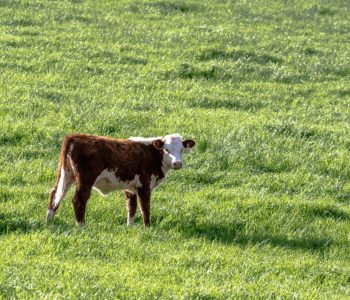Recent technical trials conducted by INTA Valle Inferior (Río Negro), INTA Concepción del Uruguay (Entre Ríos), and a private sector company aim to transform feedlot steers finishing.
According to early results, the use of a multifactorial additive in the diet allows a reduction in feed intake per kilogram of weight gained by between 31% and 35%, a significant improvement over traditional practices.
The study, focused on Polled Hereford steers weighing approximately 250 kg, was conducted in feedlot finishing systems over a period of 90 to 100 days.
Four feeding regimens were tested: two based on balanced feed and hay combined with the multifactorial additive, and two traditional diets, one with progressive adaptation to corn and hay.
U
Implications for intensive livestock production
- Cost reduction: Decreasing feed intake per kilogram gained by 35% implies a significant savings in feeding costs, which can account for up to 90% of finishing expenses.
- Optimized productivity: By reducing intake without compromising weight gain, technical indices such as feed conversion efficiency (FCE) improve, positively impacting final economic margins.
- Operational facilitation: Eliminating the adaptation period could free up labor and simplify logistics in feedlots, making management easier.
- Animal welfare: Digestive risks associated with dietary changes are minimized, reducing health setbacks and losses.
Outlook and next steps
While the results are promising, these trials are preliminary. The organizations involved confirmed that they will continue studies to validate the consistency of the additive in other breeds, entry weights, and production conditions. In addition, its production cost and commercial scale feasibility will be evaluated.
If progress is favorable, the incorporation of this type of multifactorial additive could mark a milestone for the Argentine livestock sector, optimizing feedlot efficiency and contributing to the competitive positioning of beef in domestic and international markets
Source:INTA
